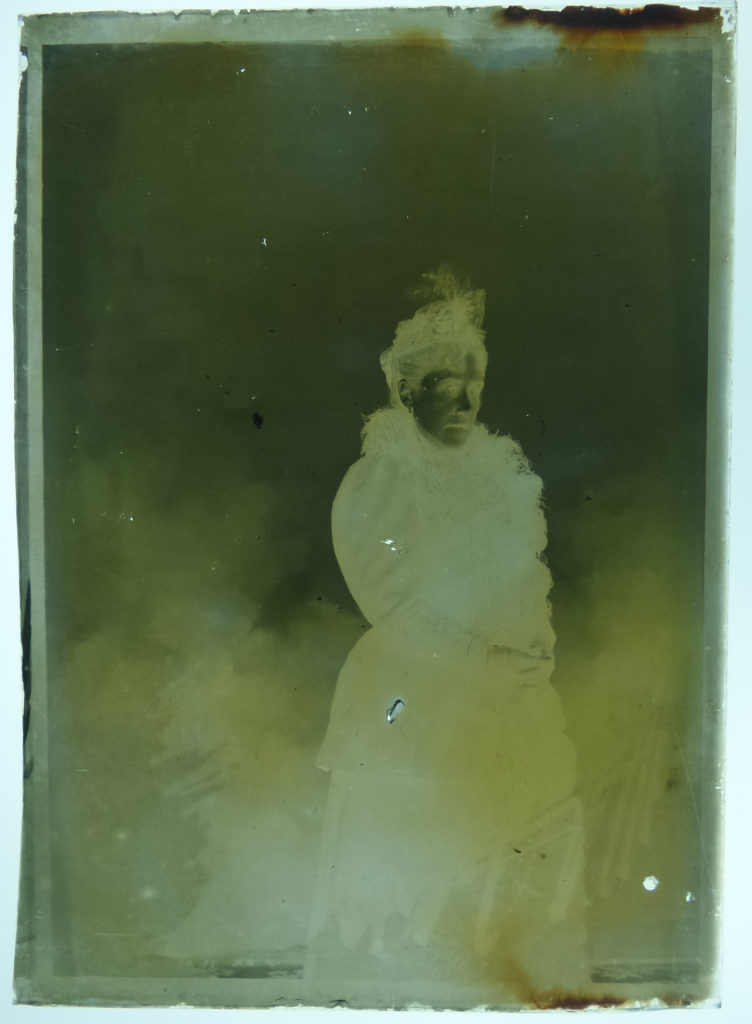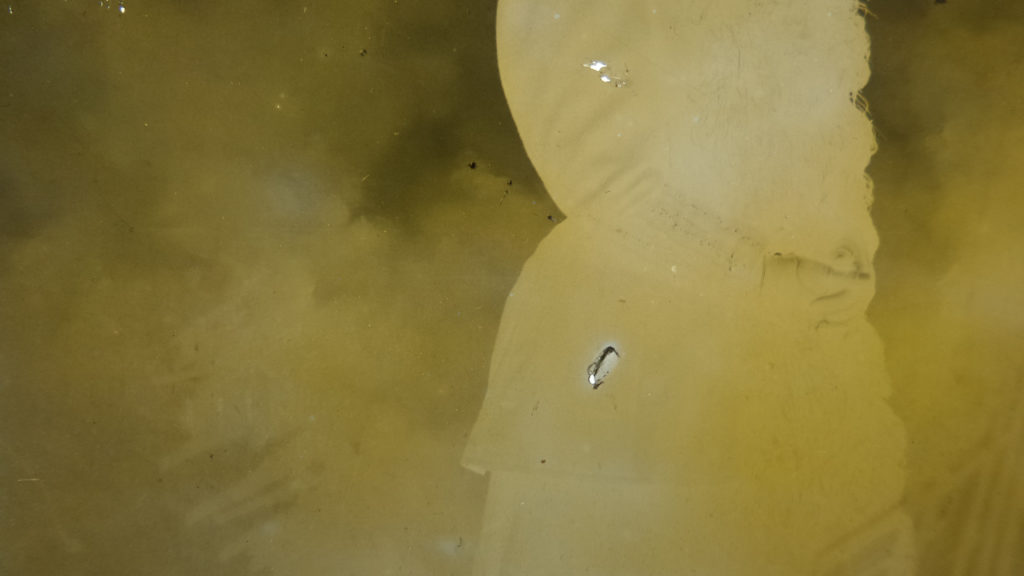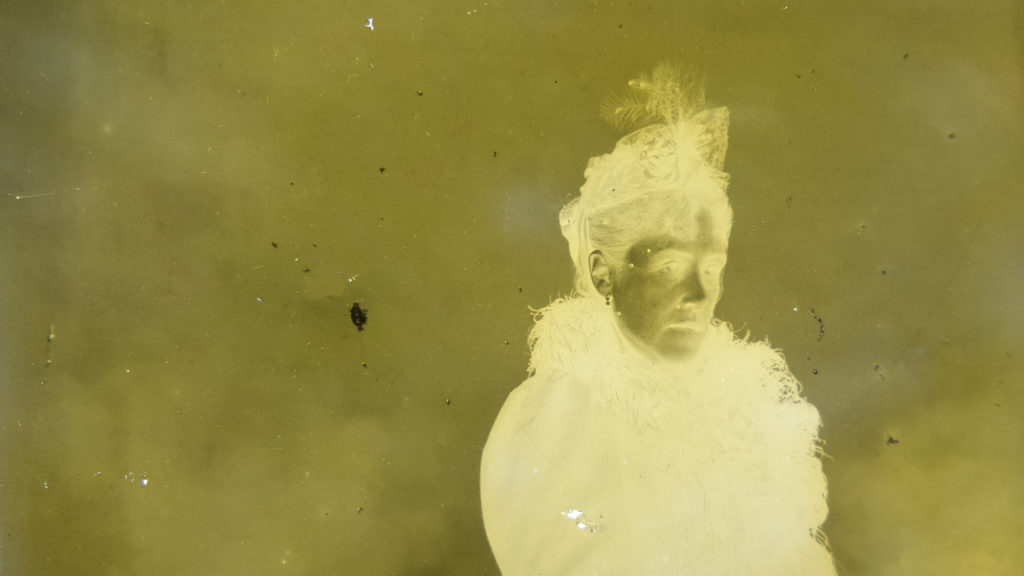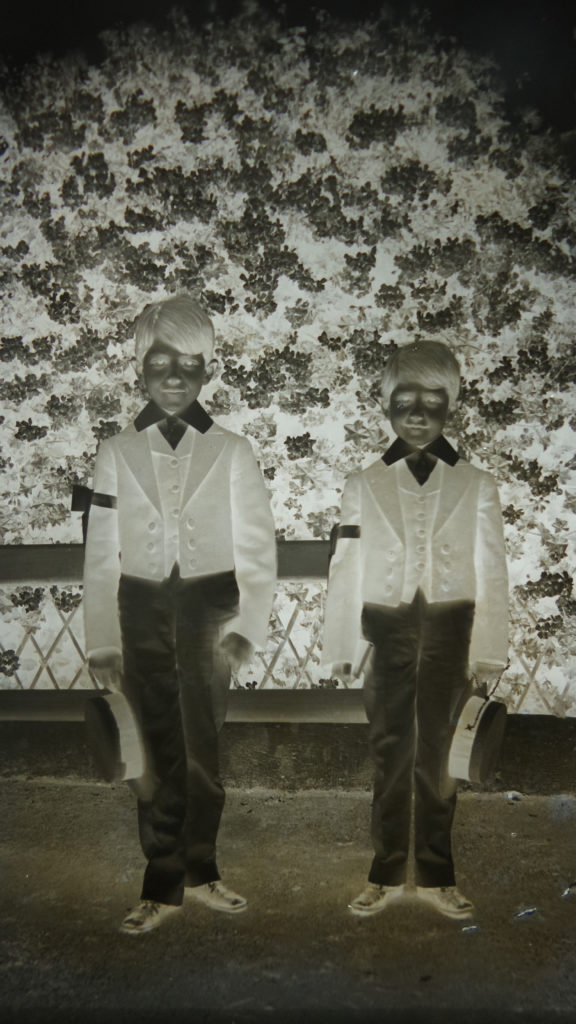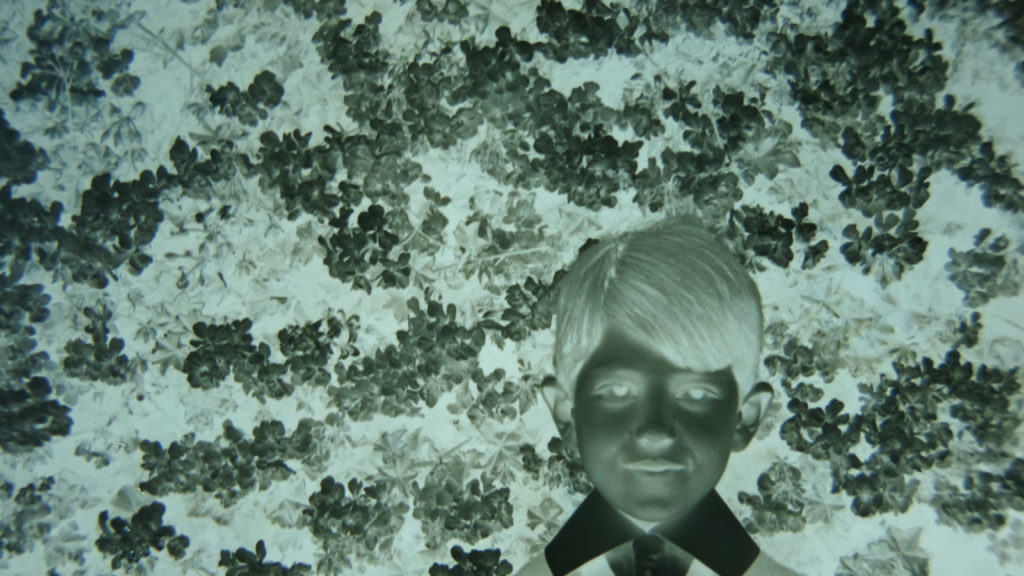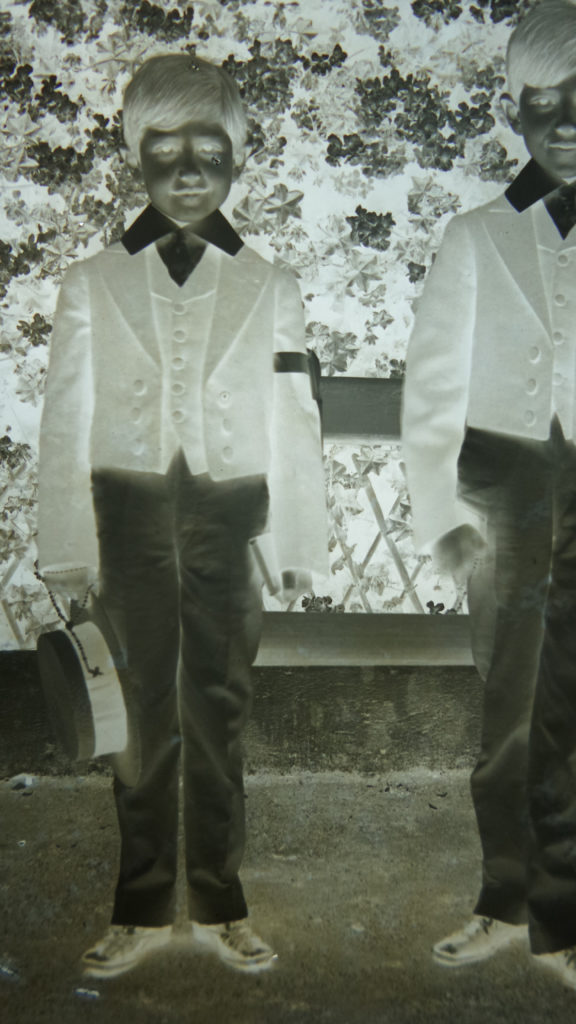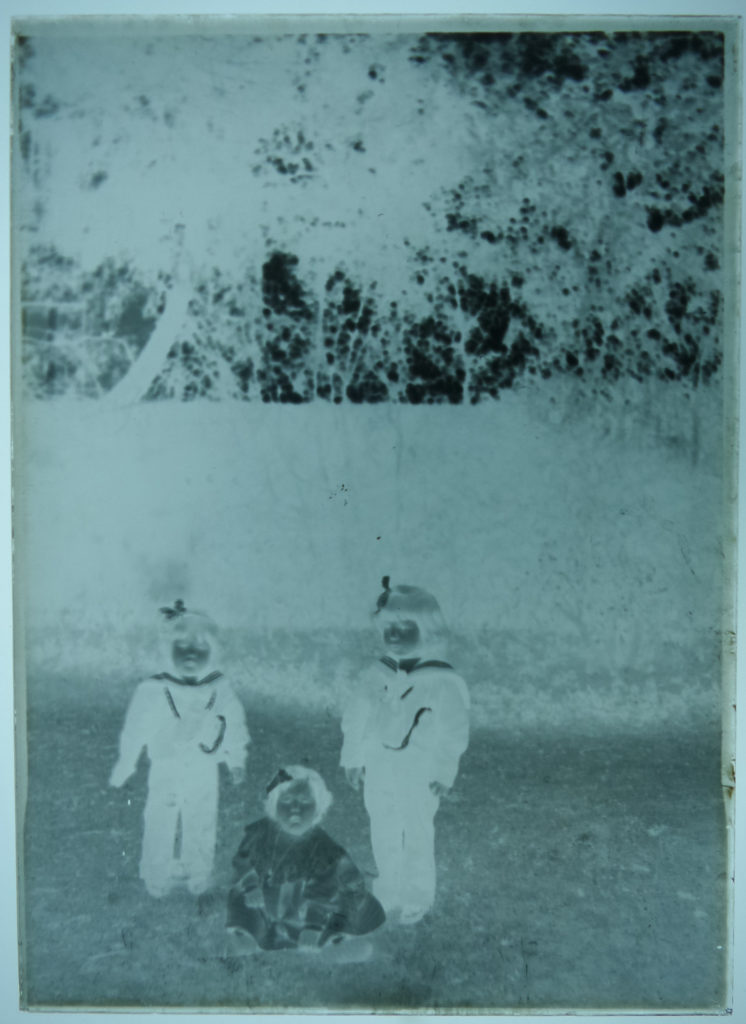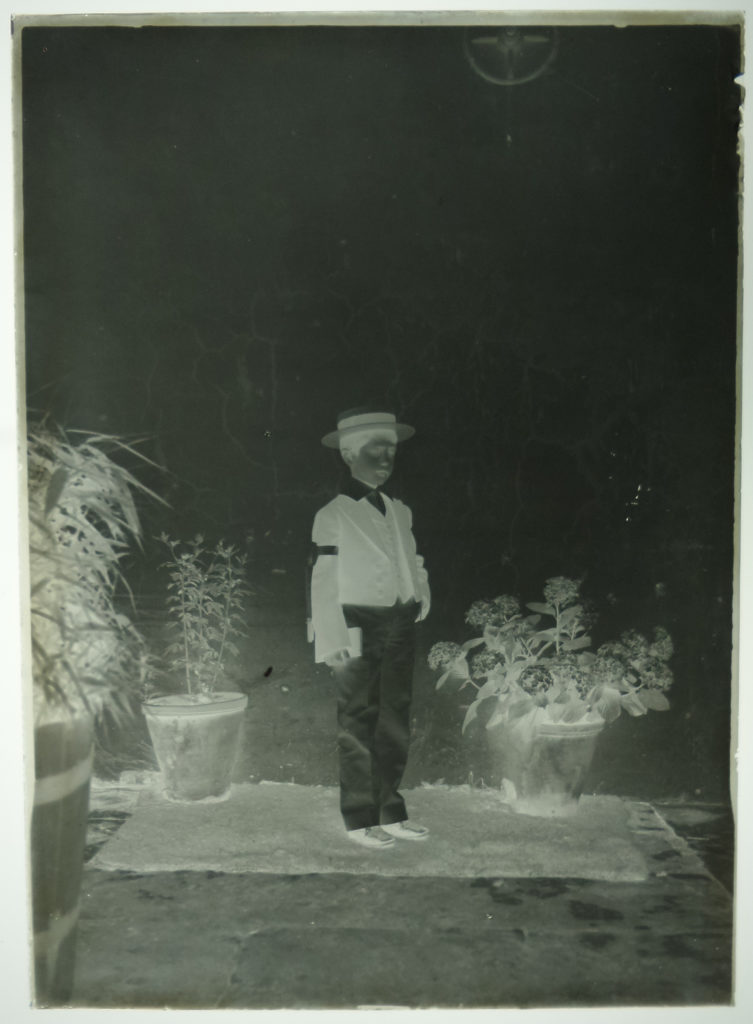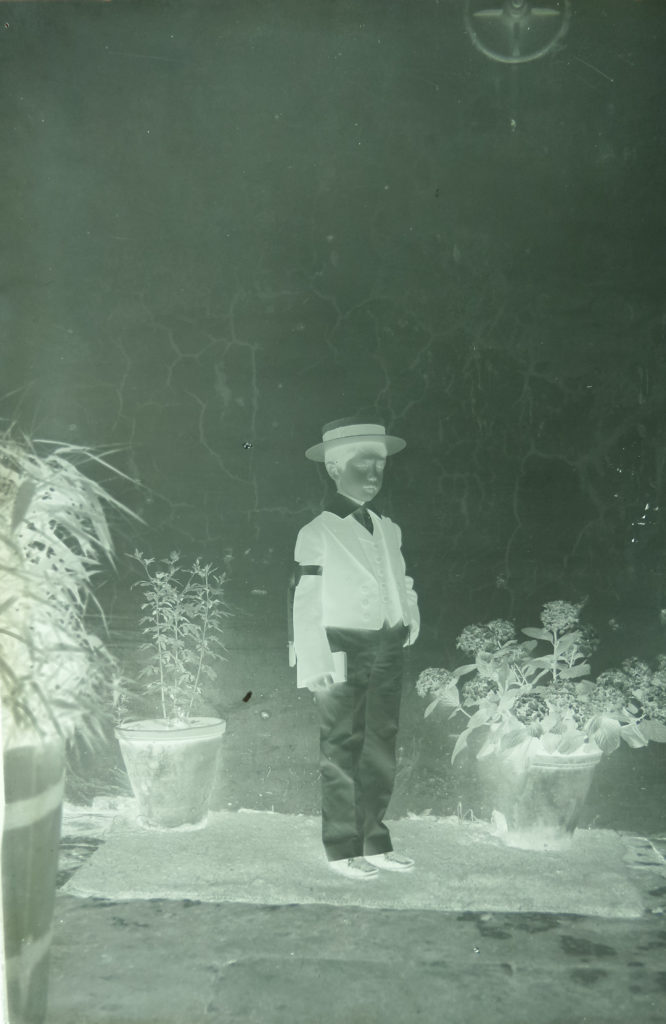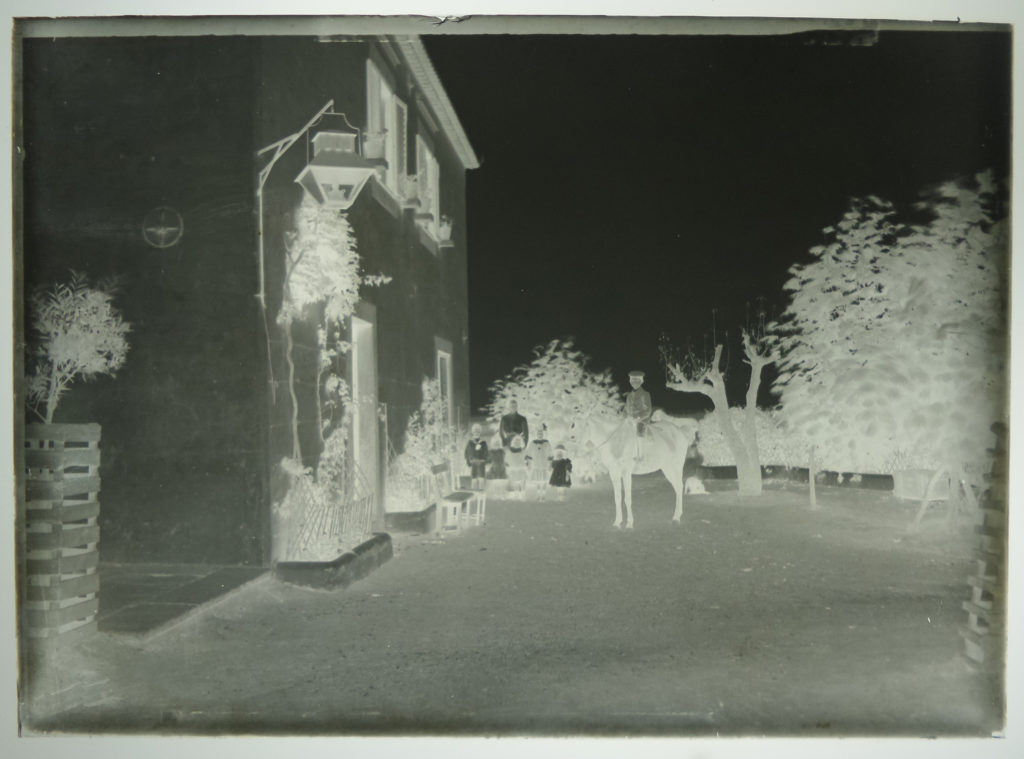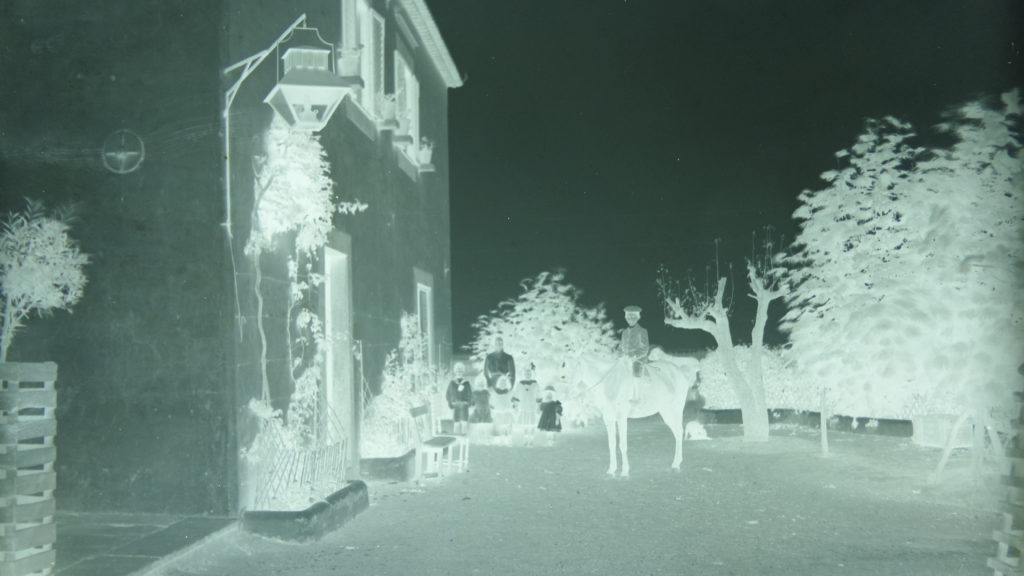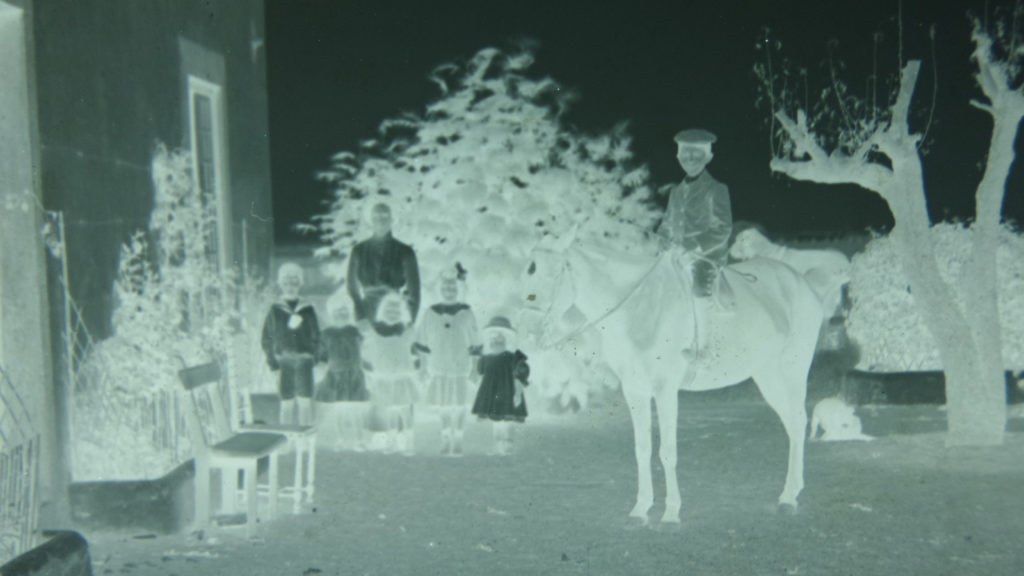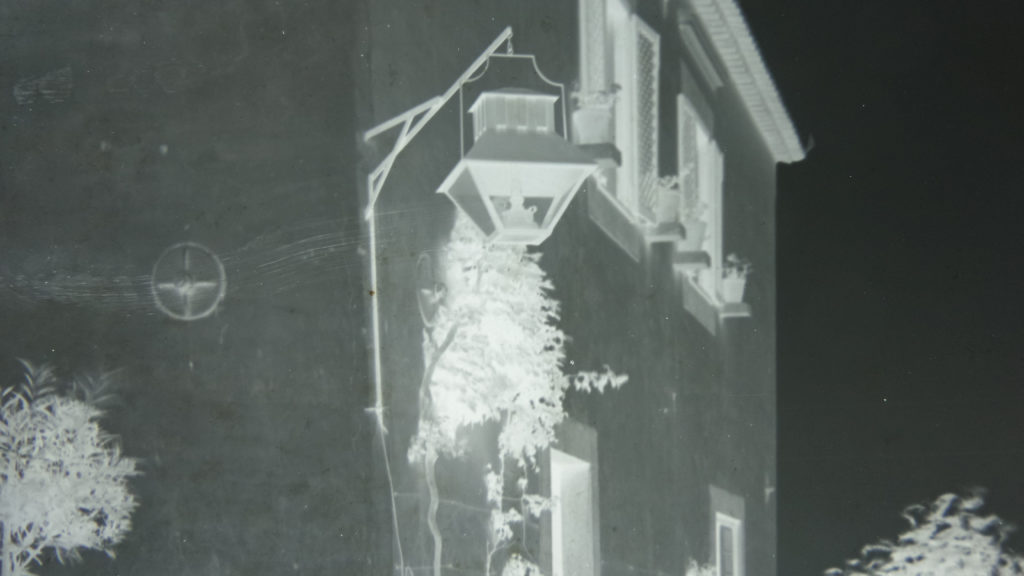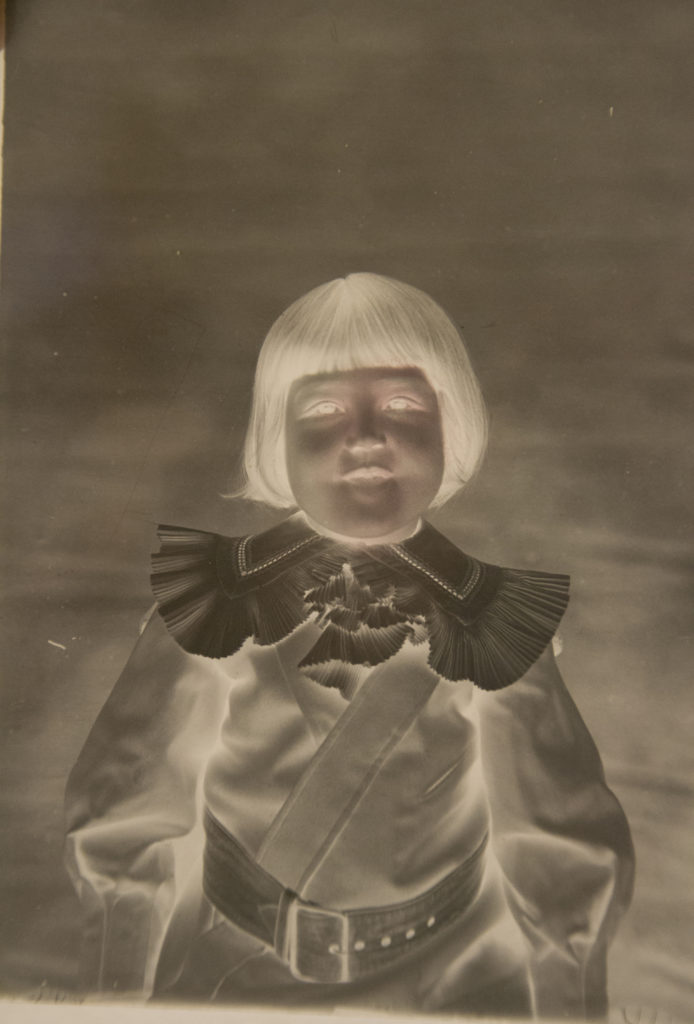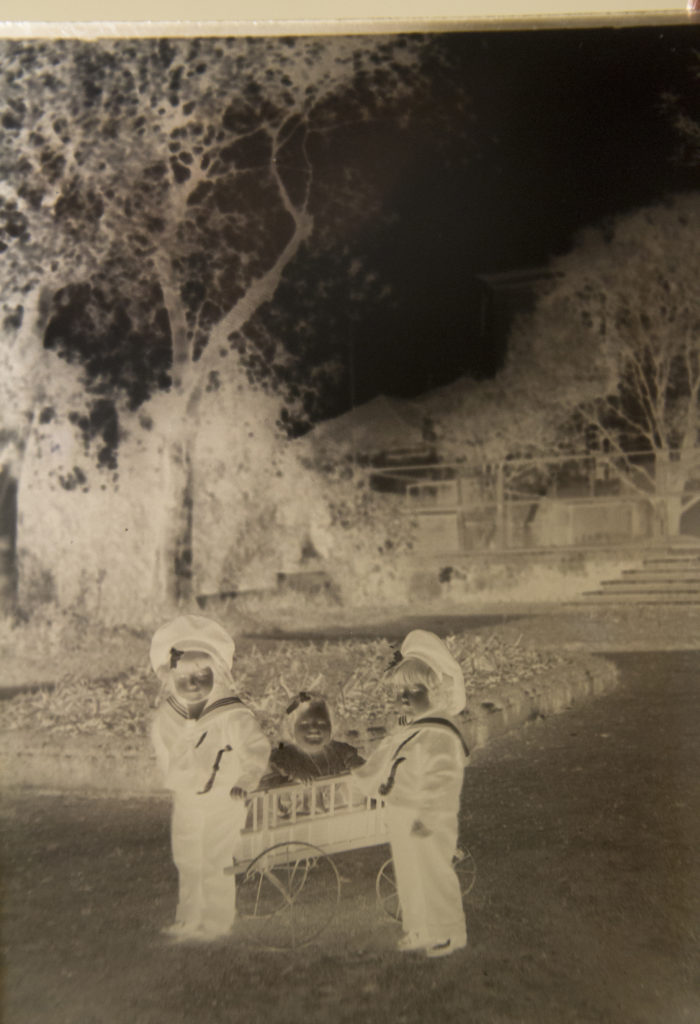After a debut album on Milan-based label Die Schachtel (11h15 local weather forecast, 2010) and an extended self-released project (No para siempre en la tierra sólo un poco aquí, 2015), Misztériumok is about to drop on Three:Four Records. Founded between France and Switzerland back in 2008, the now Lausanne-based label already knows a thing or two about the combination of folk and noise. However, the compositions from Francesco Dillon and Riccardo Wanke, the two folks behind Amuleto, put a little extra emphasis on the latter. “Urlicht” starts as an acoustics only track, but the cello sound gradually moves toward harsher tones during the drone-y 14 minutes piece. The starting point of this track—as well as for the rest of Misztériumok—are negatives of old family photos. Amuleto found those pictures—taken somewhere in Europe around the beginning of the 20th century—as silver bromide glass plates on the Feira da Ladra flea market in Lisbon.
What’s remarkable about the silver bromide plates (and related techniques to produce negatives) is their ambivalent relation to reality. The very technique used for Amuleto’s plates was employed up until the 1950s and was especially advantageous for its high light sensitivity and resolution[1]. However, the glass plates are as much a medium to reproduce a (our?) reality as to produce a new one. Due to the silver bromide emulsion’s selectivity, light is but one influence factor[2]. Thus, a so-called “photography of the invisible” emerged with those negatives around the turn of the century that dealt with chemical and physical processes involved in the production of the negatives[3]. The (unwanted) changes that occurred—and therefore references to something that hasn’t been seen when the picture was taken—were ascribed to a wide range of influences such as magnetism, electricity, heat, x-rays, phosphorescence, fluorescence as well as mechanical and physical effects of solids, liquids and gases. This did not only help to make less mistakes when producing the negatives, but also to gain new insights via the hyper-sensible plates: “There is always something that appears on the photographic plates” [4]. Therefore, not only physicochemical effects were of interest. Furthermore, this «photography of the invisible» gained the interest of occultism: «Bodily» radiation up to actual ghosts (besides the ones already present) were to be found with the negatives. Everything can be read as long as it is represented on the plates and the line between the factual and the artefactual becomes more and more blurred. Considering this perspective, the plates call into question whether they are an inspiration for Amuleto’s noise compositions or if they are a reflection of Misztériumok.
Amuleto’s Misztériumok is released on April 6, 2018 by Three:Four Records
[1] cf. the Wikipedia article for «Trockenes Gelatineverfahren».
[2] Geimer, Peter. 2002. «Was ist kein Bild? Zur ‹Störung der Verweisung›». In Ordnungen der Sichtbarkeit. Frankfurt am Main: Suhrkamp. S.313 – 341.
[3] ibid:328.
[4] Fontenay, Guillaume de, 1911. «Le rôle de la plaque sensible dans l’etude de phenomenes psychiques. Troisieme Partie. – Les trahisons de la plaque sensible». In: Annales des Science Psychiques. 21. S.351.
via Geimer 2002.
